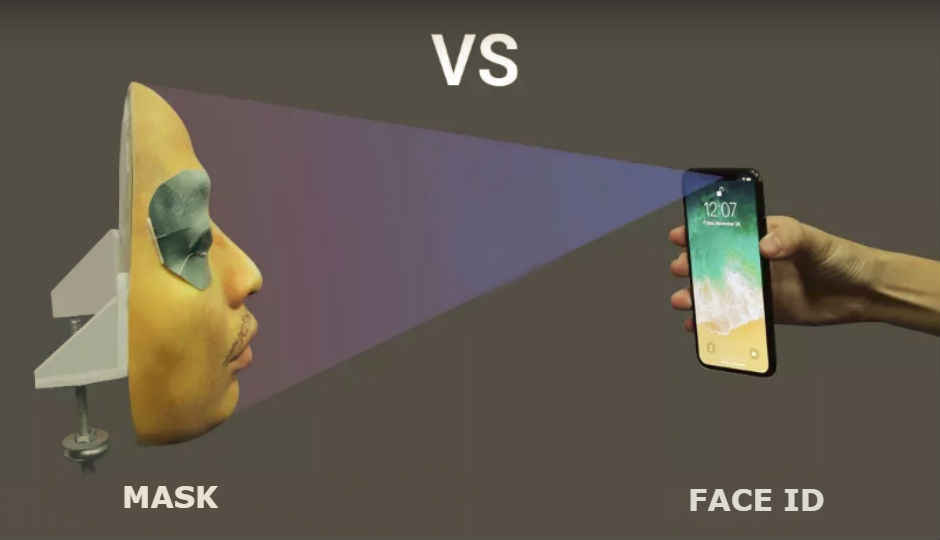From 3D printed masks to 10-year old kids: Everything that managed to fool Apple’s Face ID tech on iPhone X
People have gone to great lengths to fool Apple’s Face ID tech on the iPhone X. Here are all the times Face ID was cracked successfully.

When Apple launched the iPhone X and ditched fingerprint recognition in favour of the new Face ID, it presented a perfect opportunity for researchers and enthusiasts to test the never-before-seen technology on a phone made by the world’s most valuable company.
 Survey
SurveyApple has been a strong defender of Face ID’s accuracy and security, naturally so, and has previously claimed that Face ID confirms the presence of an attentive face through gaze detection, reads a depth map of a user's face, and the finally sends that information to the Secure Enclave for processing.
However, just like Iris scanning and facial recognition on Samsung phones, Apple’s Face ID has also met its match multiple times.
3D Printed Masks
The latest attempt to fool the iPhone X’s facial recognition technology based on its TrueDepth camera system, was made by Cybersecurity firm Bkav. Incidentally, this is the second time the security research firm has managed to play Apple’s Face ID for a fool.
The first time around, Bkav researchers managed to trick Face ID on the iPhone X using a $150 3D printed mask. The nose of the mask was hand painted by artists, while the other parts of the face were constructed using 2D printing. The skin was also hand-made to trick Apple's Artificial Intelligence. Essentially, the mask was a mix of 3D and 2D printing, with some makeup and artificial skin added to the mix.
This time, Bkav took things to the next level by creating a more expensive $200 3D printed mask made of stone powder and 2D infrared images of eyes. Now that is some commitment to tricking Face ID!
While most people may not go to such great lengths to fool iPhone X’s Face ID in everyday scenarios, such measures are definitely not above and beyond law enforcement and regulatory bodies, if a challenge to unlock an iPhone X should ever pose before them.
In the video showing off its new stone-based 3D printed mask, Bkav sets up Face ID on the iPhone X and checks the “Require Attention for Face ID” option. This ensures that the iPhone user unlocking the device is looking directly at the phone’s camera. If the user is not attentive while unlocking the iPhone X after the require attention option is selected, the device will simply not unlock.
However, thanks to the use of 2D infrared images of eyes, Bkav’s new mask was able to successfully trick Face ID and unlock the iPhone X.
“About 2 weeks ago, we recommended that only very important people such as national leaders, large corporation leaders, billionaires, etc. should be cautious when using Face ID. However, with this research result, we have to raise the severity level to every casual users: Face ID is not secure enough to be used in business transactions,” the research firm warned.
Twinning
The most obvious test of the iPhone X’s Face ID tech was performed on twins. Multiple stakeholders in the industry, as well as consumers, have tried tricking Face ID by presenting twins in front of the iPhone X.
An experiment conducted by Mashable showed how Face ID failed to differentiate between identical twins. Can you really blame it though?
While Apple might not have perfected Face ID, Microsoft’s Windows Hello feature tested with six pairs of identical twins, passed the test with flying colours. The Redmond-based software giant is definitely doing something right.
In Apple’s defence, though, another Face ID twin test conducted by Business Insider failed to unlock the iPhone X when the identical twin was presented before it, instead of the twin that registered for Face ID. One of the subjects of the twin test wrote, “I was pretty shocked that the iPhone X could really pick apart the details between me and my brother considering some of our own family members can’t tell us apart. So, yeah, it was a pleasant surprise knowing that Brian can't break into my iPhone X and I can’t break into my brother's.”
It’s all in the family
The most bizarre instance of a FaceID faux pas was recorded when a 10-year old kid was able to unlock his mother’s iPhone X by using his own face. Family resemblance seems to be a tricky area for Apple’s Face ID.
In this case, parents of the 10-year old had jokingly told him that there was no way he could gain access to the device. They were quite surprised when the device unlocked after the boy looked at it.
At the time of launch, Apple’s Phil Schiller claimed that “The chance that a random person in the population could look at your iPhone X and unlock it with their face is about one in one million. Of course, the statistics are lowered if that person shares a close genetic relationship with you. So, for example, if you happen to have an evil twin, you really need to protect your sensitive data with a passcode.”
All said and done, Apple’s Face ID is definitely not the most secure personal authentication tech out there, but neither if fingerprint sensing nor iris recognition. For now, Microsoft is the only one sitting pretty at the back of Windows Hello, but have people experimented with it enough to prove its prowess over Face ID? We think not.
Digit NewsDesk
Digit News Desk writes news stories across a range of topics. Getting you news updates on the latest in the world of tech. View Full Profile